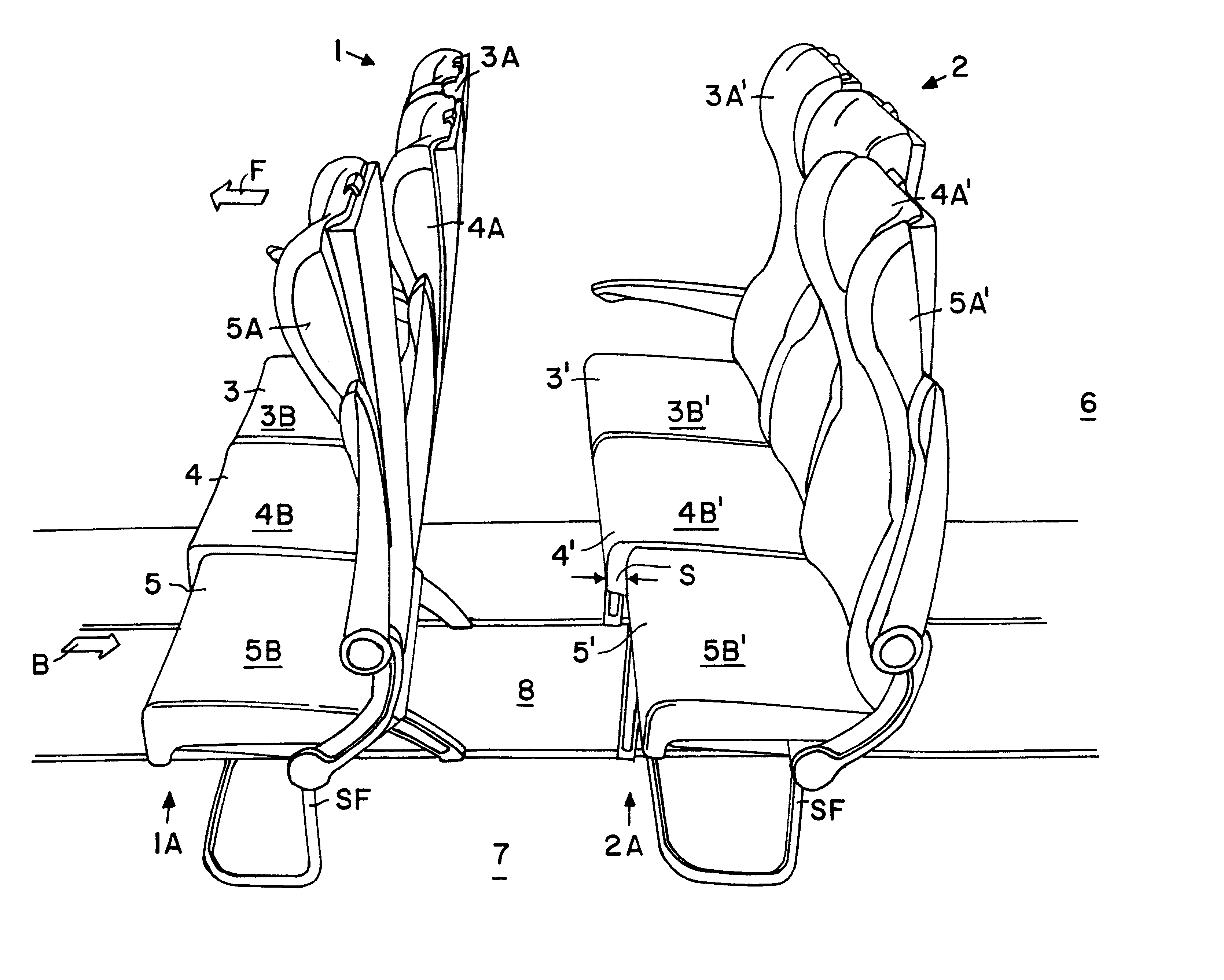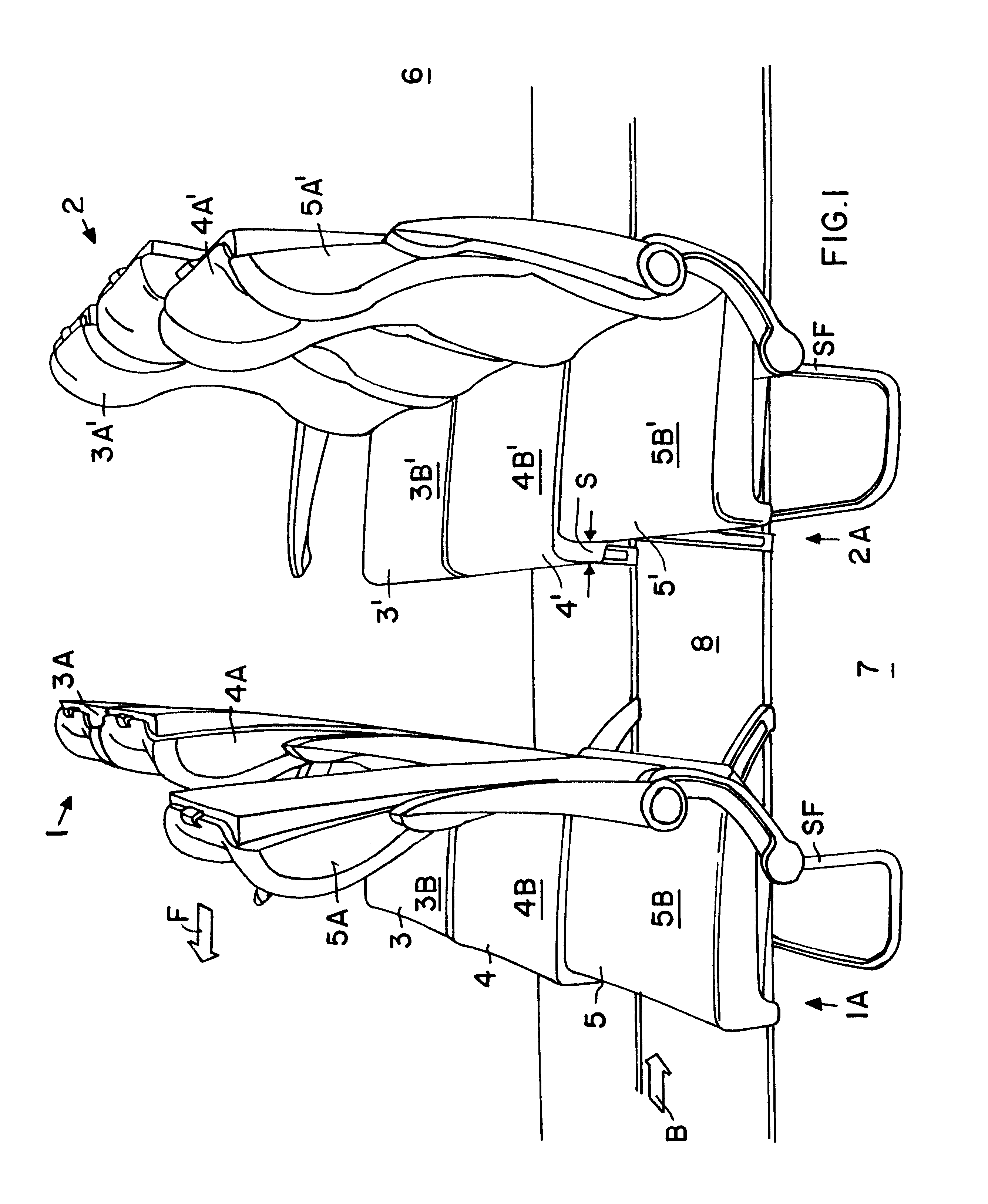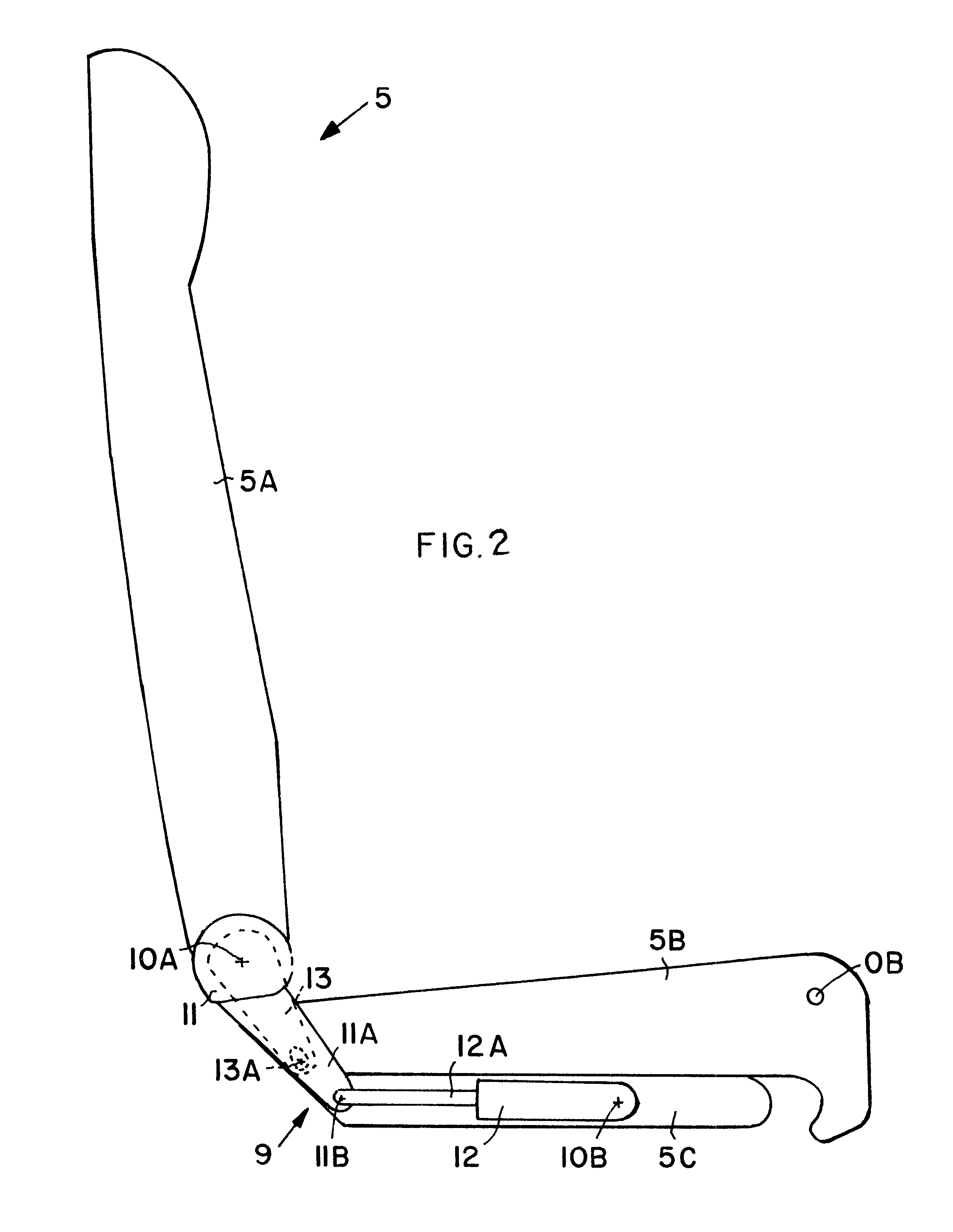Aircraft passenger chair
a passenger seat and aircraft technology, applied in the field of aircraft passenger chairs, can solve the problems of substantial delay in the loading or unloading procedure, time-consuming problems, and significant sum total of time wasted in this manner, and achieve the effect of reducing the number of passengers on the ground, and reducing the number of seats
- Summary
- Abstract
- Description
- Claims
- Application Information
AI Technical Summary
Benefits of technology
Problems solved by technology
Method used
Image
Examples
Embodiment Construction
While it is customary to refer to passenger chairs as "seats", a distinction is made in this specification between the "chair" with all its components and the "seat" which is one of these components.
FIG. 1 shows a first group 1 of passenger chairs 3, 4 and 5 forming a first row 1A. A second group 2 of passenger chairs 3', 4', 5' forms a second row 2A. Each row 1A, 2A is provided with its seat support frame SF. All seats face in the forward direction indicated by an arrow F. The backward direction is indicated by an arrow B. The chairs are arranged in columns extending in parallel to an aisle 7 and in parallel to the longitudinal aircraft direction F in a passenger aircraft cabin 6. Each chair 3, 4, 5 and 3', 4', 5' respectively comprises a backrest 3A, 4A, 5A and a seat 3B, 4B, 5B in the row 1A and a back rest 3A', 4A', 5A' and a seat 3B', 4B', 5B' in the row 2A.
As a passenger walks along the aisle 7, during boarding or deboarding, to his or her assigned seat or chair the passenger ...
PUM
 Login to View More
Login to View More Abstract
Description
Claims
Application Information
 Login to View More
Login to View More - R&D
- Intellectual Property
- Life Sciences
- Materials
- Tech Scout
- Unparalleled Data Quality
- Higher Quality Content
- 60% Fewer Hallucinations
Browse by: Latest US Patents, China's latest patents, Technical Efficacy Thesaurus, Application Domain, Technology Topic, Popular Technical Reports.
© 2025 PatSnap. All rights reserved.Legal|Privacy policy|Modern Slavery Act Transparency Statement|Sitemap|About US| Contact US: help@patsnap.com



